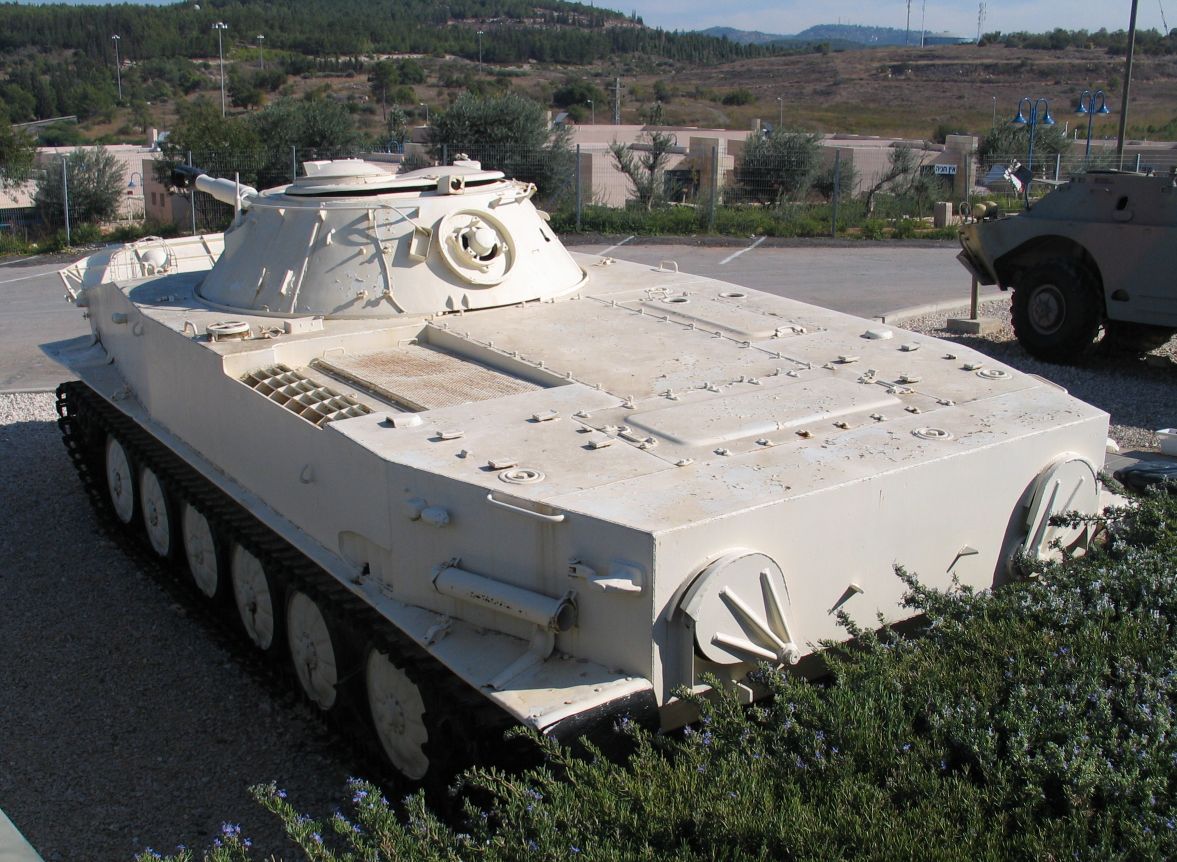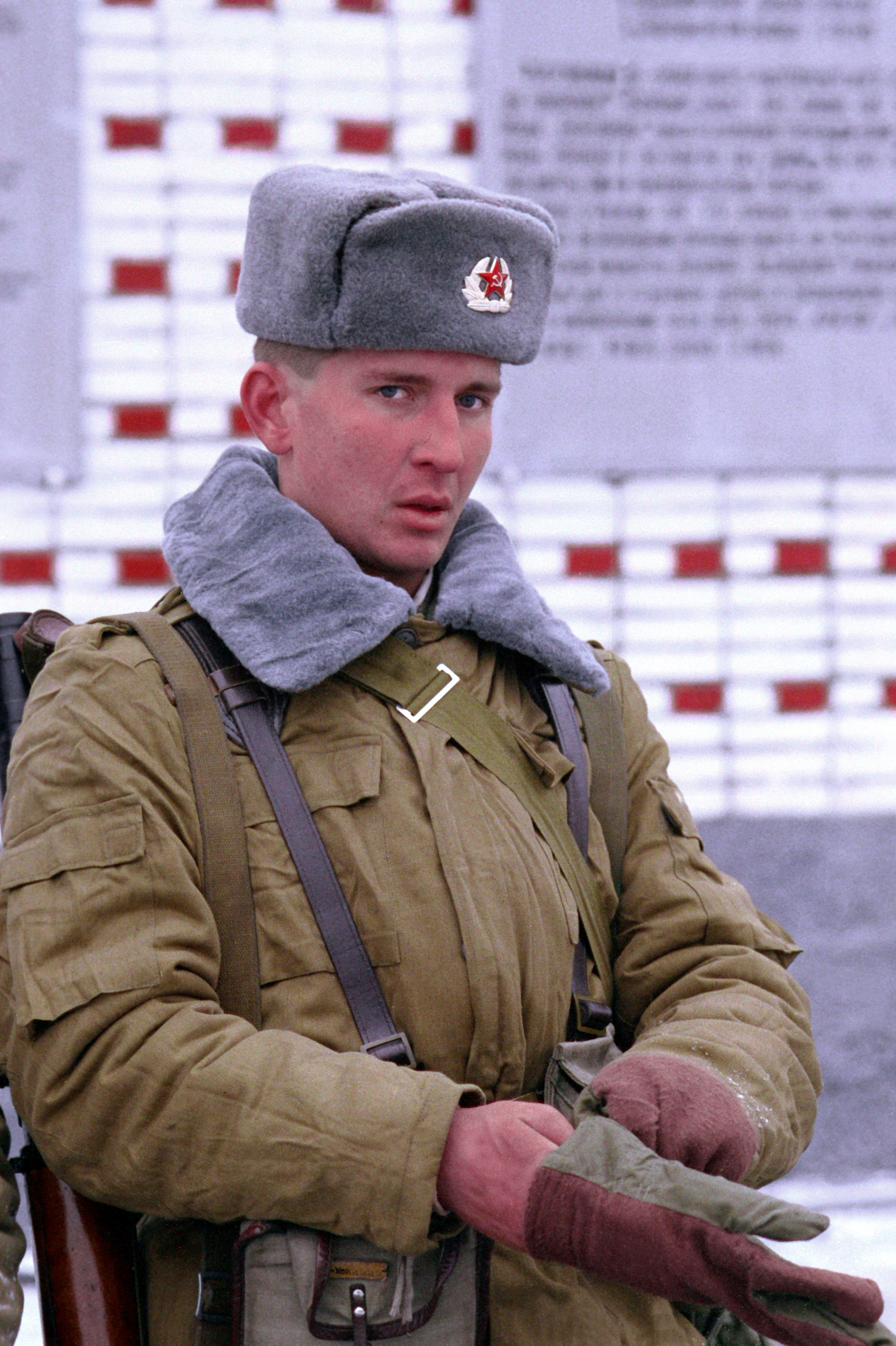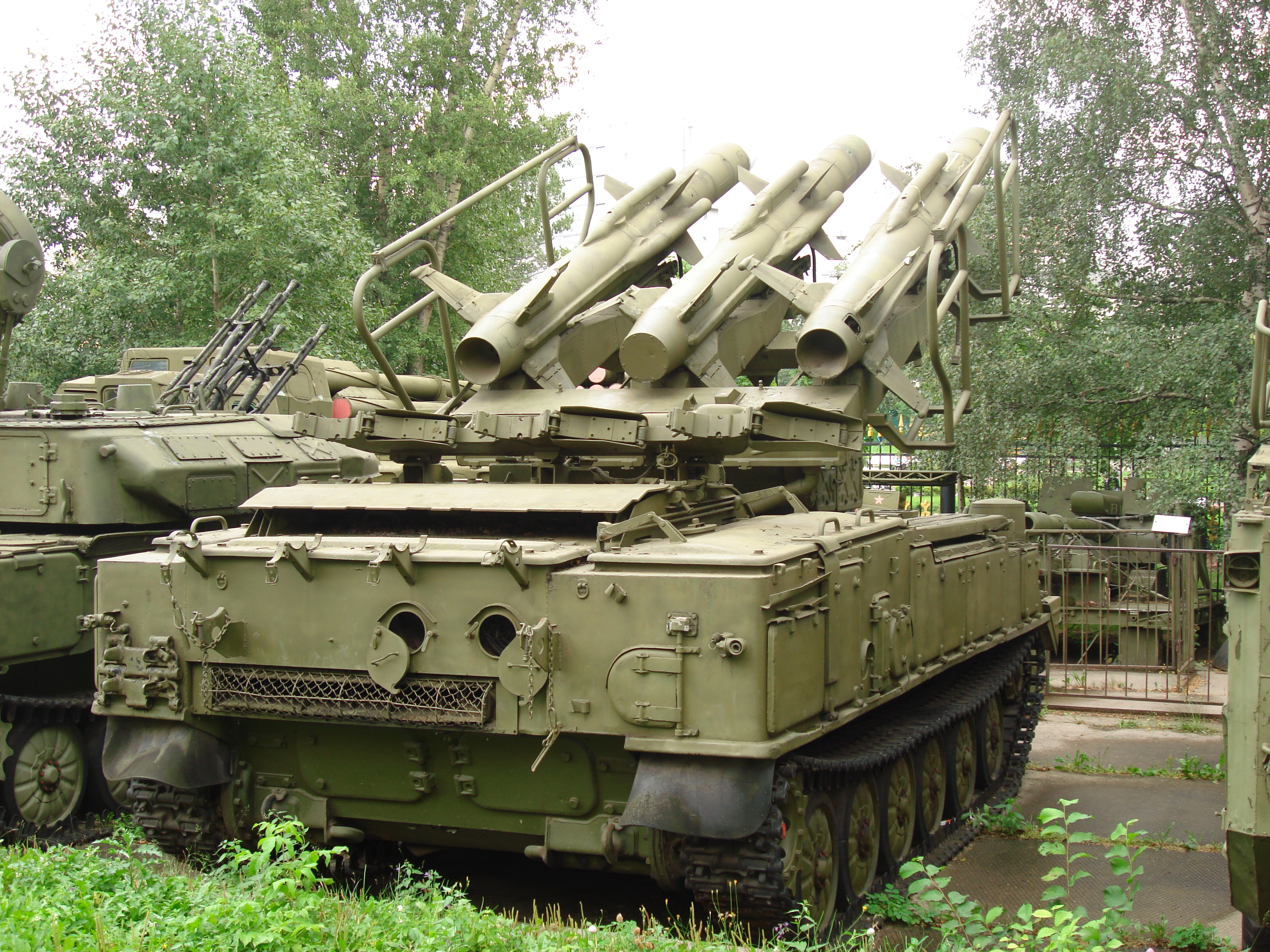|
PT-76
The PT-76 is a Soviet Union, Soviet amphibious vehicle, amphibious light tank that was introduced in the early 1950s and soon became the standard reconnaissance tank of the Soviet Army and the other Warsaw Pact armed forces. It was widely exported to other friendly states, like India, Indonesia, Iraq, Syria, North Korea and North Vietnam. The tank's full name is Floating Tank–76 (, ''plavayushchiy tank'', or , ''PT-76''). ''76'' stands for the caliber of the main armament: the 76.2 mm D-56T series rifled tank gun. The PT-76 is used in the reconnaissance and fire-support roles. Its chassis served as the basis for a number of other vehicle designs, many of them amphibious, including the BTR-50 armored personnel carrier, the ZSU-23-4 self-propelled anti aircraft gun, the ASU-85 airborne self-propelled gun and the 2K12 Kub anti-aircraft missile launch vehicle. Development After World War II, the concept of light tanks was resurrected in the USSR. They were to be used in recon ... [...More Info...] [...Related Items...] OR: [Wikipedia] [Google] [Baidu] |
D-56T
The 76.2 mm D-56T series rifled tank gun is the tank gun used on the PT-76, which is the only known armoured vehicle to carry it. Description The D-56T is an anti-tank gun of 76.2mm calibre. It can fire five types of rounds, using a manual loader system, it has an effective fire rate of six to eight rounds per minute. It has a max effective range of approximately 1500 meters. This gun is 42 calibers long. A typical combat ammunition load consists of 24 x OF-350 Frag-HE, 4 x sub-caliber AP-T, 4 x AP-T and 8 x BK-350M HEAT rounds. The gun is usually mounted in an oval dish-type circular truncated cone turret with flat sloping sides which is mounted over the second, third, and fourth pair of road wheels. All PT-76s have a fume extractor for the main gun at the rear of the turret. Some were fitted with a multi-slotted muzzle brake. Most PT-76s typically feature this gun with a double-baffle muzzle brake, except for the PT-76B, which is typically fitted with the D-56T gun with ... [...More Info...] [...Related Items...] OR: [Wikipedia] [Google] [Baidu] |
BTR-50
The BTR-50 (BTR stands for ''Bronetransporter'' (), literally "armored transporter") is a Soviet Union, Soviet tracked Amphibious vehicle, amphibious armored personnel carrier (APC) based on the PT-76 light tank chassis. The BTR-50 was developed in 1952 and entered service with the Soviet Army in 1954. It ceased production in the USSR in 1970, but production continued in Czechoslovakia until 1972 and there is suggestion that it still produced by some foreign companies. It has the ability to transport up to 20 fully equipped infantrymen, and can be armed with nothing, a 7.62 mm SGMB medium machine gun, or a 14.5 mm KPV heavy machine gun. It saw notable service in the Six-Day War, the Yom Kippur War, and most recently in the Russo-Ukrainian War. The BTR-50 shares similarities with two other APCs developed independently, the OT-62 TOPAS and the Type 77 (armored personnel carrier), Type 77. While the OT-62 is an improved copy of the BTR-50 developed jointly by Czechoslovakia an ... [...More Info...] [...Related Items...] OR: [Wikipedia] [Google] [Baidu] |
Light Tank
A light tank is a Tank classification, tank variant initially designed for rapid movements in and out of combat, to outmaneuver heavier tanks. It is smaller with thinner vehicle armour, armor and a less powerful tank gun, main gun, tailored for better tactical mobility (military), mobility and ease of transport and military logistics, logistics. They are primarily employed in the screening (tactical), screening, armoured reconnaissance, armored reconnaissance, skirmishing, artillery observer, artillery observation, and supplementing landing operations in a fire support role of expeditionary warfare, expeditionary forces where larger, heavier tanks are unavailable or have difficulties operating safely or efficiently. The fast light tank was a major feature of the pre–World War II army buildup, where it was expected they would be used to exploit breakthroughs in enemy lines created by slower, heavier tanks, with the goal of disrupting communications and supply lines. Numerous sm ... [...More Info...] [...Related Items...] OR: [Wikipedia] [Google] [Baidu] |
Volgograd Tractor Factory
The Volgograd Tractor Plant (, ''Volgogradski traktorni zavod'', or , ''VgTZ''), formerly the ''Dzerzhinskiy'' Tractor Factory or the Stalingrad Tractor Plant, is a heavy equipment factory located in Volgograd, Russia. It was once one of the largest tractor manufacturing enterprises in the USSR. It was a site of fierce fighting during World War II's Battle of Stalingrad. During its lifetime, VgTZ has supplied more than 2.5 million tractors to the farming industry, making a huge contribution to the mechanization of agriculture. VgTZ tractors operate in 32 countries throughout Southeast Asia, Africa, Europe, North America, and Latin America. Also used for the production of military vehicles, VgTZ is inextricably linked with the history of Soviet tank building. The plant continues to operate on a small scale, but much of it is now derelict or has been demolished. History Until 1961, the plant was called the Stalingrad Tractor Plant named for F. Dzerzhinsky (, ''Stalingradski tra ... [...More Info...] [...Related Items...] OR: [Wikipedia] [Google] [Baidu] |
Amphibious Vehicle
An amphibious vehicle (or simply amphibian) is a vehicle that works both on land and on or under water. Amphibious vehicles include amphibious Amphibious cycle, bicycles, Amphibious ATV, ATVs, Amphibious automobile, cars, Duckboats, buses, trucks, Railroad car, railway vehicles, combat vehicles, and hovercraft. Classic landing craft are not amphibious vehicles as they do not work on land, although they are part of amphibious warfare. Ground effect vehicles, such as ''ekranoplans'', will likely crash on any but the flattest of landmasses so are also not considered to be amphibious vehicles. General technical notes Two main categories of amphibious vehicles are those that travel on an air cushion (Hovercraft) and those that do not. Among the latter, many extend the off-road capabilities of land vehicles to all kinds of terrain, including ice, snow, mud, marsh, swamp etc. This explains why many designs use Tracked vehicle, tracks in addition to or instead of wheels, and in som ... [...More Info...] [...Related Items...] OR: [Wikipedia] [Google] [Baidu] |
ASU-85
The ASU-85 ( – airborne self-propelled mount) is a Soviet Union, Soviet-designed Airborne forces, airborne Self-propelled artillery, self-propelled gun of the Cold War era. From 1959, it began to replace the open-topped ASU-57 in service. It was, in turn, replaced by the BMD-1 beginning in 1969. Development history Development of a new assault gun for the armed forces started at the OKB-40 design bureau of the Mytishchi Machine Building Plant (MMZ), under the supervision of chief designer Nikolaj Aleksandrovich Astrov. The first Ob'yekt 573 prototype was ready for factory tests in the second half of 1953. This first vehicle was followed by a small batch of three improved vehicles that were evaluated by the armed forces in 1956–1957. The improved vehicles were powered by a new, horizontal six cylinder diesel engine, the YaMZ-206V, instead of the original V-6 of the PT-76. In 1958, the order to start series production of the SU-85—as it was initially known (although there was ... [...More Info...] [...Related Items...] OR: [Wikipedia] [Google] [Baidu] |
Soviet Army
The Soviet Ground Forces () was the land warfare service branch of the Soviet Armed Forces from 1946 to 1992. It was preceded by the Red Army. After the Soviet Union ceased to exist in December 1991, the Ground Forces remained under the command of the Commonwealth of Independent States until it was formally abolished on 14 February 1992. The Soviet Ground Forces were principally succeeded by the Russian Ground Forces in Russian territory. Outside of Russia, many units and formations were taken over by the post-Soviet states; some were withdrawn to Russia, and some dissolved amid conflict, notably in the Caucasus. While the Ground Forces are commonly referred to in English language sources as the Soviet Army, in Soviet military parlance the term '' armiya'' (army) referred to the combined land and air components of the Soviet Armed Forces, encompassing the Ground Forces as well as the Strategic Rocket Forces, the Air Defence Forces, and the Air Forces. After World W ... [...More Info...] [...Related Items...] OR: [Wikipedia] [Google] [Baidu] |
ZSU-23-4
The ZSU-23-4 "Shilka" is a lightly armored Soviet self-propelled, radar-guided Anti-aircraft warfare, anti-aircraft weapon system (Self-propelled anti-aircraft weapon, SPAAG). It was superseded by the 2K22 Tunguska (SA-19 Grison). Etymology The acronym "ZSU" stands for ''Zenitnaya Samokhodnaya Ustanovka'' (), meaning "anti-aircraft self-propelled system"; the "23" signifies the bore diameter in millimetres; the "4" signifies the number of gun barrels. It is named after the Shilka River in Russia. Afghan soldiers nicknamed it the "sewing machine" due to the sound of its cannons firing. It is also referred to by its nickname of "Zeus", derived from the Russian acronym. History The previous Soviet self-propelled anti-aircraft gun (SPAAG), the ZSU-57-2, was armed with two 57 mm autocannons; it was aimed optically using a basic tracking and lead calculating system. The ZSU-57-2 was not particularly successful despite its very powerful autocannons; given their large caliber, it ... [...More Info...] [...Related Items...] OR: [Wikipedia] [Google] [Baidu] |
Soviet Union
The Union of Soviet Socialist Republics. (USSR), commonly known as the Soviet Union, was a List of former transcontinental countries#Since 1700, transcontinental country that spanned much of Eurasia from 1922 until Dissolution of the Soviet Union, it dissolved in 1991. During its existence, it was the list of countries and dependencies by area, largest country by area, extending across Time in Russia, eleven time zones and sharing Geography of the Soviet Union#Borders and neighbors, borders with twelve countries, and the List of countries and dependencies by population, third-most populous country. An overall successor to the Russian Empire, it was nominally organized as a federal union of Republics of the Soviet Union, national republics, the largest and most populous of which was the Russian SFSR. In practice, Government of the Soviet Union, its government and Economy of the Soviet Union, economy were Soviet-type economic planning, highly centralized. As a one-party state go ... [...More Info...] [...Related Items...] OR: [Wikipedia] [Google] [Baidu] |
Tank Gun
A tank gun is the main armament of a tank. Modern tank guns are high-velocity, large-caliber artilleries capable of firing kinetic energy penetrators, high-explosive anti-tank, and cannon-launched guided projectiles. Anti-aircraft guns can also be mounted to tanks. As the tank's primary armament, they are almost always employed in a direct fire mode to defeat a variety of ground targets at all ranges, including dug-in infantry, lightly armored vehicles, and especially other heavily armored tanks. They must provide accuracy, range, penetration, and rapid fire in a package that is as compact and lightweight as possible, to allow mounting in the cramped confines of an armored gun turret. Tank guns generally use self-contained ammunition, allowing rapid loading (or use of an autoloader). They often display a bulge in the barrel, which is a bore evacuator, or a device on the muzzle, which is a muzzle brake. History World War I The first tanks were used to break through trench d ... [...More Info...] [...Related Items...] OR: [Wikipedia] [Google] [Baidu] |
Leningrad
Saint Petersburg, formerly known as Petrograd and later Leningrad, is the List of cities and towns in Russia by population, second-largest city in Russia after Moscow. It is situated on the Neva, River Neva, at the head of the Gulf of Finland on the Baltic Sea. The city had a population of 5,601,911 residents as of 2021, with more than 6.4 million people living in the Saint Petersburg metropolitan area, metropolitan area. Saint Petersburg is the List of European cities by population within city limits, fourth-most populous city in Europe, the List of cities and towns around the Baltic Sea, most populous city on the Baltic Sea, and the world's List of northernmost items#Cities and settlements, northernmost city of more than 1 million residents. As the former capital of the Russian Empire, and a Ports of the Baltic Sea, historically strategic port, it is governed as a Federal cities of Russia, federal city. The city was founded by Tsar Peter the Great on 27 May 1703 on the s ... [...More Info...] [...Related Items...] OR: [Wikipedia] [Google] [Baidu] |
2K12 Kub
The 2K12 ''"Kub"'' (; English: 'cube') (NATO reporting name: SA-6 "Gainful") mobile surface-to-air missile system is a Soviet Union, Soviet low to medium-level air defence system designed to protect ground forces from air attack. ''2К12'' is the GRAU designation of the system. Each 2K12 battery consists of a number of similar tracked vehicles, one of which carries the 1S91 (SURN vehicle, NATO designation "Straight Flush") 25 kW G band (NATO), G/H band (NATO), H band radar (with a range of ) equipped with a continuous wave semi active radar homing, illuminator, in addition to an optical sight. The battery usually also includes four triple-missile transporter erector launchers (TELs), and four trucks, each carrying three spare missiles and a crane. The TEL is based on a GM chassis, GM-578 chassis, while the 1S91 radar vehicle is based on a GM-568 chassis, all developed and produced by Russian manufacturer Mytishchi Machine-Building Plant, MMZ. Development The development ... [...More Info...] [...Related Items...] OR: [Wikipedia] [Google] [Baidu] |







